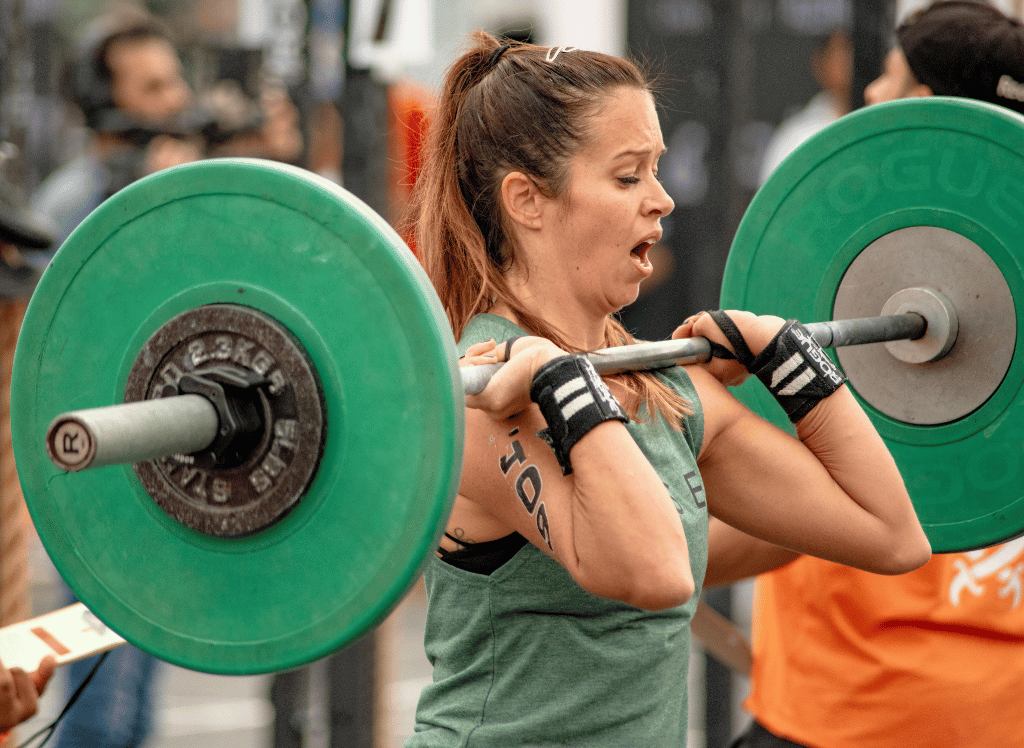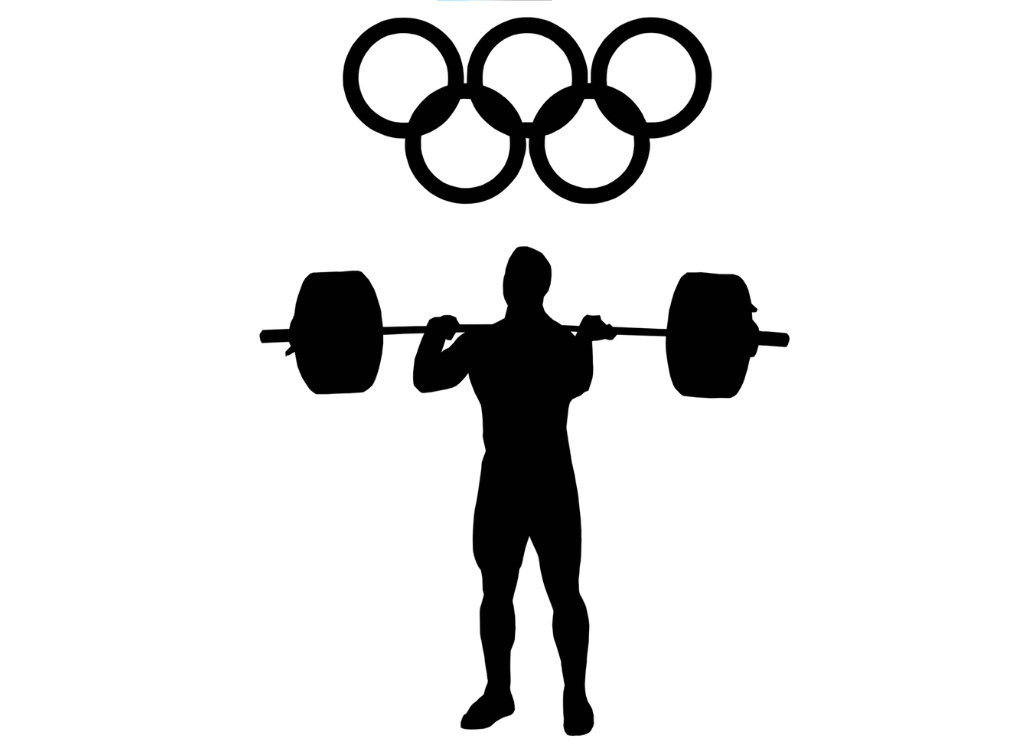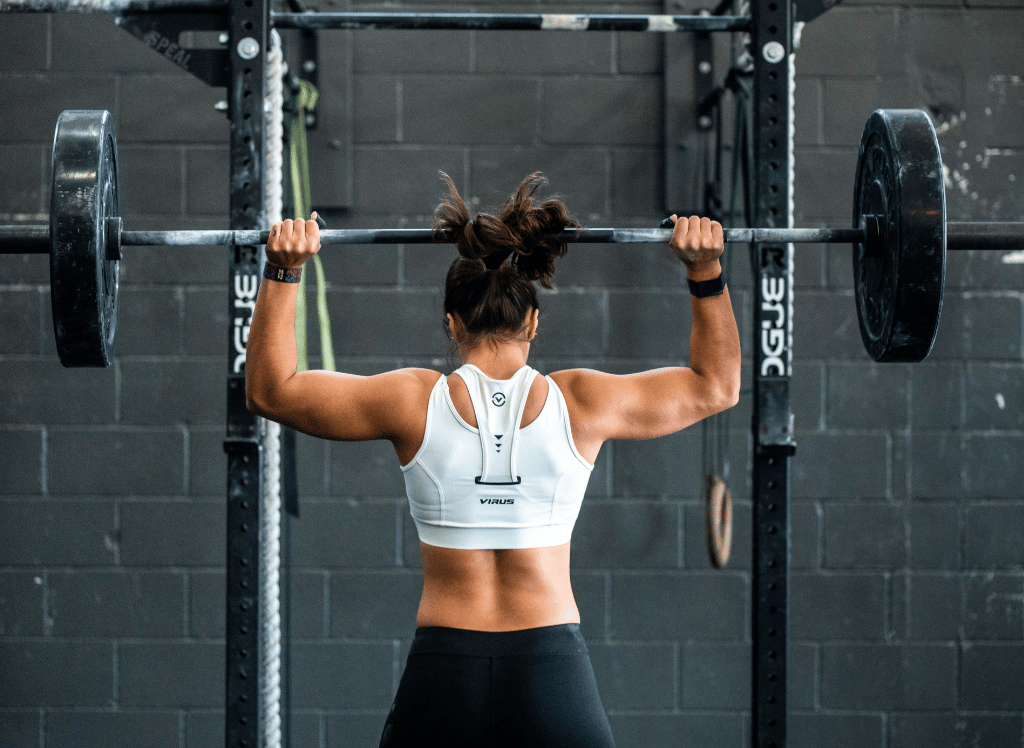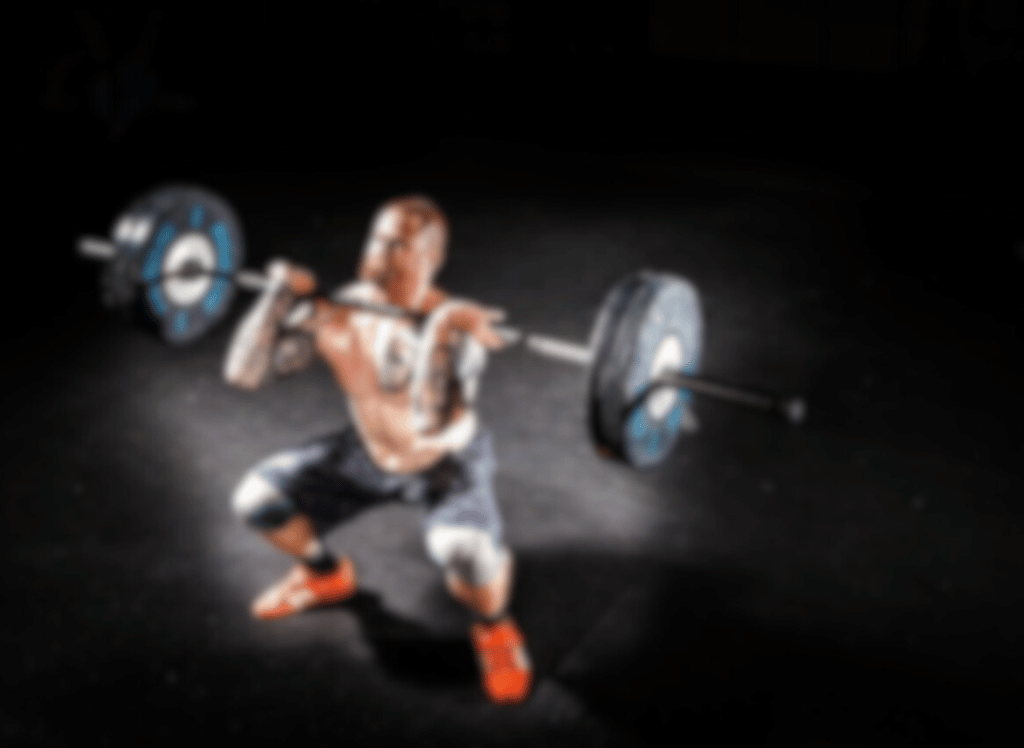The Olympic snatch is a dynamic lift where the athlete lifts a barbell from the ground to overhead in one continuous motion. Key for developing explosive power, strength, and coordination, this lift requires a precise blend of technique and athleticism. We hope we will have you lifting like a pro in no time. So grab your PVC pipe, put on your lifting shoes, and let’s get snatching!
The Basics of the Snatch
The snatch involves lifting an Olympic bar from the ground to overhead. It’s like trying to catch a greased pig at a county fair—challenging but oh-so-rewarding. The snatch works your entire body, from your lower body muscles to your upper body muscles, and requires explosive power and precise technique.
To start, you need to understand the basic components of the snatch: the starting position, the first pull, the second pull, and the catch position. Each of these stages is crucial for a successful lift, so let’s break them down.
Starting Position
Your starting position is like the foundation of a house—get it wrong, and everything else crumbles. Begin with your feet hip-width apart and the barbell over your mid foot. Your grip should be wide, known as the snatch grip, with your hands positioned outside your knees. Keep your arms relaxed and your back straight, with your chest up and your armpits forward.
In this position, your weight should be evenly distributed, and your shoulders should be slightly in front of the bar. This setup ensures that you’re ready to generate upward momentum and keep the bar close to the body throughout the lift.
The First Pull
The first pull is where the magic begins. From your starting position, lift the barbell upward by extending your knees and hips. Keep your back angle constant and your arms relaxed. The goal here is to move the barbell from the ground to just above your knees while maintaining a vertical torso.
As you lift, focus on keeping the bar close to your body. Imagine you’re trying to zip up a tight jacket—if the bar drifts away, you’ll lose control and power. This phase sets the stage for the explosive second pull.
Explosive Power
The second pull is where you unleash your inner superhero. Once the barbell passes your knees, it’s time to explode. Extend your hips and knees forcefully, shrug your shoulders, and pull the barbell upward with all your might. This explosive movement generates the upward momentum needed to lift the bar overhead.
During the second pull, your goal is to achieve maximum height and speed. Think of it as trying to jump out of a swimming pool—use your legs, hips, and upper body muscles to propel the barbell upward.
The Catch Position
The catch position is where you transform from a mere mortal into a weightlifting wizard. As the barbell reaches its peak height, quickly drop into a full squat snatch position and catch the bar overhead. Your arms should be fully extended, and your body should be in a stable receiving position.
To achieve a successful lift, focus on maintaining a stable position and keeping the barbell overhead. Your feet should be flat on the ground, and your torso should be upright. This position requires flexibility, balance, and strength, so practice makes perfect.
Common Snatch Mistakes
Even the best lifters make mistakes, but knowing what to look out for can save you from a world of hurt. Some common snatch mistakes include starting with the bar too far from the body, pulling with the arms too early, and failing to achieve a stable receiving position.
To avoid these pitfalls, focus on proper technique and seek feedback from an experienced coach. Remember, practice doesn’t make perfect—perfect practice makes perfect. So, take your time, be patient, and keep refining your snatch technique.
The Competitive Weightlifting
If you’re serious about weightlifting, consider competing in a weightlifting competition. Competing can help you set goals, stay motivated, and push yourself to new heights. It’s also a great way to meet other lifters and learn from their experiences.
To prepare for a competition, focus on refining your technique and building strength. Work with an experienced coach to develop a training plan and ensure you’re ready for the big day. Competing can be a rewarding experience that helps you take your weightlifting to the next level.
The Snatch FAQs
What is the snatch grip?
The snatch grip is a wide grip used in the snatch lift. Your hands should be positioned outside your knees, with your arms relaxed and your back straight. This grip allows you to lift the barbell overhead in one fluid motion.
How can I improve my snatch technique?
To improve your snatch technique, focus on proper form and practice regularly. Incorporate snatch variations, such as the muscle snatch, power snatches, and hang snatches, into your training. Seek feedback from an experienced coach and use drills, such as the PVC pipe drill and the empty barbell drill, to refine your technique.
What are common snatch mistakes to avoid?
Common snatch mistakes include starting with the bar too far from the body, pulling with the arms too early, and failing to achieve a stable receiving position. To avoid these mistakes, focus on proper technique, keep the bar close to your body, and practice regularly. Seek feedback from an experienced coach to identify and correct any issues.
Summary
Mastering the snatch is like taming a wild beast—it takes time, patience, and a lot of practice. By understanding the basic components of the snatch, avoiding common mistakes, and incorporating snatch variations into your training, you can become a snatch master in no time. Remember to focus on proper technique, seek feedback from an experienced coach, and have fun with your training. Happy lifting!









